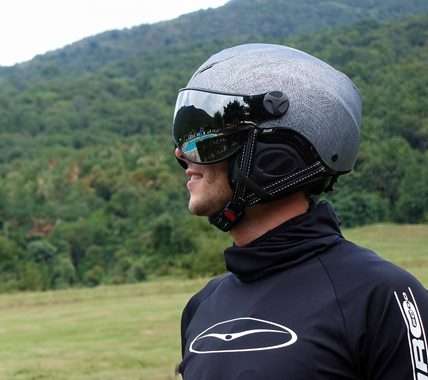Paragliding, a thrilling aerial sport, offers unparalleled freedom and breathtaking views. However, like any adventure activity, it’s not without its risks. Understanding the contributing factors to paragliding accidents is crucial for pilots of all skill levels to mitigate potential dangers. This article delves into the complexities surrounding these incidents, exploring common causes and providing actionable strategies to enhance safety protocols and awareness. Ultimately, a proactive approach to risk management is essential for enjoying the sport responsibly and minimizing the occurrence of paragliding accidents.
Common Causes of Paragliding Accidents
Several factors can contribute to paragliding accidents, ranging from pilot error to unpredictable weather conditions. Being aware of these potential pitfalls is the first step towards preventing them.
- Pilot Error: This is often cited as a primary cause. It includes insufficient training, poor decision-making in flight, exceeding skill level, and inadequate pre-flight checks.
- Weather Conditions: Strong winds, turbulence, and sudden changes in weather can quickly create hazardous situations. Flying in unsuitable conditions is a significant risk factor.
- Equipment Malfunction: While less common, equipment failures, such as lines breaking or harness issues, can lead to accidents. Regular inspection and maintenance are vital.
- Mid-Air Collisions: In crowded flying sites, the risk of collisions increases. Maintaining awareness of surrounding pilots and following established traffic patterns is paramount.
- Terrain Hazards: Flying close to mountainsides or over unfamiliar terrain can present unforeseen dangers. Proper route planning and awareness of potential obstacles are essential.
Mitigating Risks and Enhancing Safety
Preventing paragliding accidents requires a multi-faceted approach, focusing on pilot training, equipment maintenance, and responsible decision-making.
Comprehensive Training and Skill Development
Investing in thorough training from a certified instructor is crucial. Pilots should master fundamental skills, understand weather patterns, and learn how to handle emergency situations. Continuous learning and seeking advanced training are essential for ongoing skill development.
Rigorous Equipment Inspection and Maintenance
Regularly inspect your paragliding equipment for any signs of wear and tear. Follow the manufacturer’s guidelines for maintenance and replacement of components. A well-maintained wing and harness are essential for safe flying.
Responsible Decision-Making and Risk Assessment
Before each flight, carefully assess the weather conditions and your own skill level. Be prepared to postpone or cancel a flight if conditions are unfavorable. Avoid flying in strong winds, turbulence, or near thunderstorms. The thrill of flight is no match for staying safe and knowing your limitations can prevent paragliding accidents.
Using Technology to Improve Safety
Modern technology has significantly improved paragliding safety. GPS devices, variometers, and flight computers provide valuable information about altitude, speed, and wind conditions. Using these tools effectively can enhance situational awareness and help pilots make informed decisions.
Comparative Table: Accident Causes and Prevention Strategies
| Accident Cause | Prevention Strategy |
|---|---|
| Pilot Error | Comprehensive training, experience building, self-assessment. |
| Weather Conditions | Weather forecasting analysis, site-specific weather knowledge, delaying flights. |
| Equipment Malfunction | Regular inspection, maintenance, and replacement. |
Ultimately, by understanding the risks and implementing proactive safety measures, we can significantly reduce the occurrence of paragliding accidents and enjoy this incredible sport responsibly. As we’ve seen, a combination of proper training, equipment maintenance, and sound judgment is key. To ensure the future of paragliding remains safe and enjoyable for all, we must prioritize safety and share this knowledge with fellow enthusiasts to prevent paragliding accidents.


